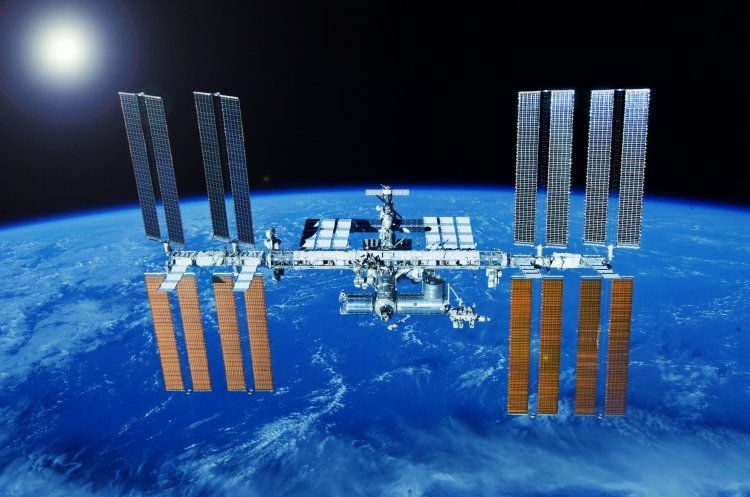The Moon is a unique satellite in the solar system. While most moons are much smaller than their planets, ours is not so drastically different in size from Earth, so Earth and Moon can be considered a double planet, because the Moon is not so small compared to Earth to be strictly its satellite. Mars, for example, has two satellites ─ Phobos and Deimos ─ and they are quite tiny compared to their main planet.
The Moon plays an enormous role in the life of our planet: it stabilizes the Earth's rotational axis and our climate, it has a tremendous amount of renewable resources that can be used for the future needs of humanity, and, of course, it has been a source of human inspiration for thousands of years.
According to the most popular theory in the scientific community (yet not the only one), the Moon was formed about 4.5 billion years ago as a result of a collision between the Earth and another planet, presumably about the size of Mars. Today, this hypothetical planet has the name Theia. The model of impact formation of the Moon is supported by the similar oxygen isotope composition of the Earth and the Moon and some other data. However, there are studies showing that the composition of the Moon's mantle is closer to the Theia protoplanet.
Hundreds of millions of years ago, the Moon was much closer to the Earth, and its contribution to the tides on our planet was more tangible. According to one hypothesis, such powerful tides may have contributed to the fact that life moved from water to land.
Today, the Earth's satellite attracts the most interest as a source of resources. According to Goldman Sachs forecasts, the explored reserves of gold, diamonds and zinc on Earth will be left in 20 years of mining, and the reserves of platinum, copper and nickel will run out in 40 years. Scientists more and more often draw their attention to the growing scarcity of rare and rare-earth elements necessary for the development of advanced technologies in modern industry. Resources of the Earth are exhaustible, but the Moon, unlike our planet, is constantly replenished with useful resources (due to the fall of asteroids on its surface). Large amounts of iron, nickel, cobalt, platinum and platinoids can be found in lunar craters. There are Helium-3 reserves on the Moon, capable of providing energy for humans for five thousand years to come. Future mining operations could greatly change the landscape of the Moon.
What can be mined on the Moon? Water. Can be used as fuel for space vehicles. Gold. Can be used in jewelry, dentistry, as well as electronics, medicine, and astronautics. Platinum. Used in chemical industry, in the manufacture of medical equipment and jewelry. Rare-earth elements. Used in electronics. Yttrium is used in the manufacture of television and computer screens.
They say that nothing lasts forever under the Moon. Yet the Moon itself is eternal neither. It is known that the satellite is moving away from the Earth by about 4 centimeters per year. As a result, the days on our planet are getting longer, but we don't notice it: the consequences of the Moon's recession will only become most apparent in millions or even hundreds of millions of years later.
Despite modern technology, our knowledge about the dynamics of the moon's recession is not complete, says Doctor of Physical and Mathematical Sciences, Head of Department of Lunar and Planetary Research at the Sternberg State Astronomical Institute of Moscow State University, Vladislav Vladimirovich Shevchenko. The scientist gave Scientific Russia more details in his commentary:
“When laser measurements and laser reflectors mounted on the Moon appeared, we learned how to measure the distance from the Moon to the Earth much more accurately, but, again, this is the distance between the laser beam emitter and the reflector ─ and to get more detailed data, we need to understand how this reflector is positioned in relation to the center of a geometric figure or to the center of the core, etc. and this is a much more difficult task. Therefore, the accuracy of calculations of the moon's distance is not yet very confident, even when using laser measurements and laser location. Moreover, this process (the Moon's recession) will apparently become tangible only millions or even billions of years later, which means that our civilization most likely will not be affected by it. Perhaps, this is the reason why we do not have any detailed studies on this subject today.
The Moon's contribution to the development of our biosphere is still large, just as it was billions of years ago at the earliest stage of the Earth-Moon system. This system is often referred to as a double planet because of the close relationship between the Earth and the Moon. Among recent events that immediately come to my mind is the accident at the Fukushima Daiichi nuclear power plant in 2011, which was directly related, among other things, to the impact of the Moon. The accident was caused by an earthquake and the resulting tsunami; if we compare everything with the position of the Moon, it would appear that this catastrophic moment coincided with the moment when the Moon crossed the meridian of the plant, being high above the horizon of the place (the location of the nuclear power plant). Thus, taking into account the tidal influences of the Moon, we understand that it aggravated the force of this tsunami.
Generally speaking, there are many indications that in dual systems such as our Earth-Moon, one planet may strongly influence the biosphere of the other. The change of climatic mechanisms on the Earth may be related not only to anthropogenic influence, but also to the influence of the Moon. This factor should not be underestimated either.”
Photo: archangel80889 / 123RF






















